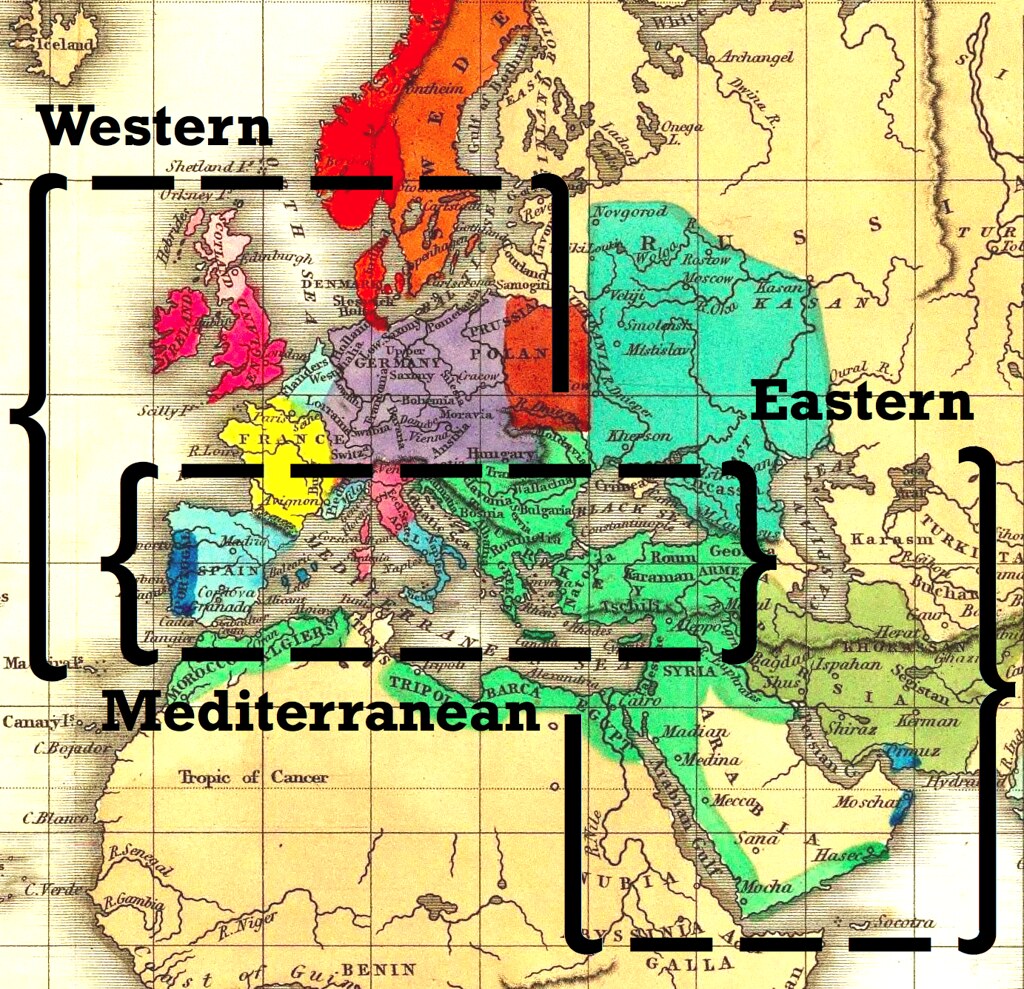The
Ottoman Empire has been portrayed by Turkish and European scholars alike as a
state doomed to failure in the modern age by its anachronistic commitment to an
obscurantist Islamic faith. When sweeping studies of global history like Paul Kennedy's or David Landes's present the Ottomans as the last and most
promising of history’s great Islamic or Middle Eastern empires, this religious
or civilizational explanation for its demise makes sense. But consider what the
Ottoman Empire’s political and economic trajectory looks like when it is viewed
as one of several Mediterranean empires. This map depicts political entities
grouped as “Western,” “Eastern” or “Mediterranean.” When Spain, Italy, and what
is now Turkey are viewed as a group separated from both Europe and the Middle
East, for example, the similarities between them become striking. All were at
the height of their wealth and power when the Mediterranean was at the center
of the world. By the 19th century, the Ottoman sultan was the sick man of
Europe, but it wasn’t as if Spain or Italy were industrial powerhouses. Italy,
driven by its northern industrial base, took off a little more quickly than the
other two, but all three remained poor well into the 20th century. After
finally escaping fascism, Spain got a boost by joining the European Union in
the 1970s. Turkey, which began to come into its own as an industrial and export
hub in the 1990s, is now a member of the Group of 20 (G20) largest economies, and the
country’s problems of late have been more political than economic or religious.





